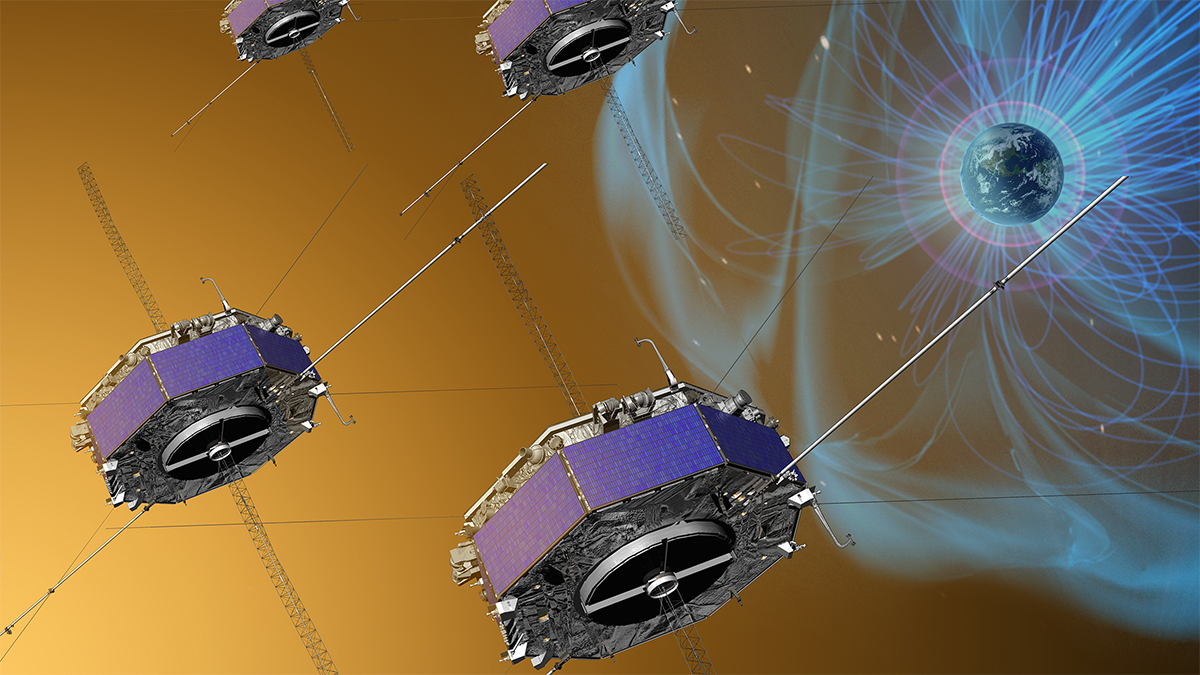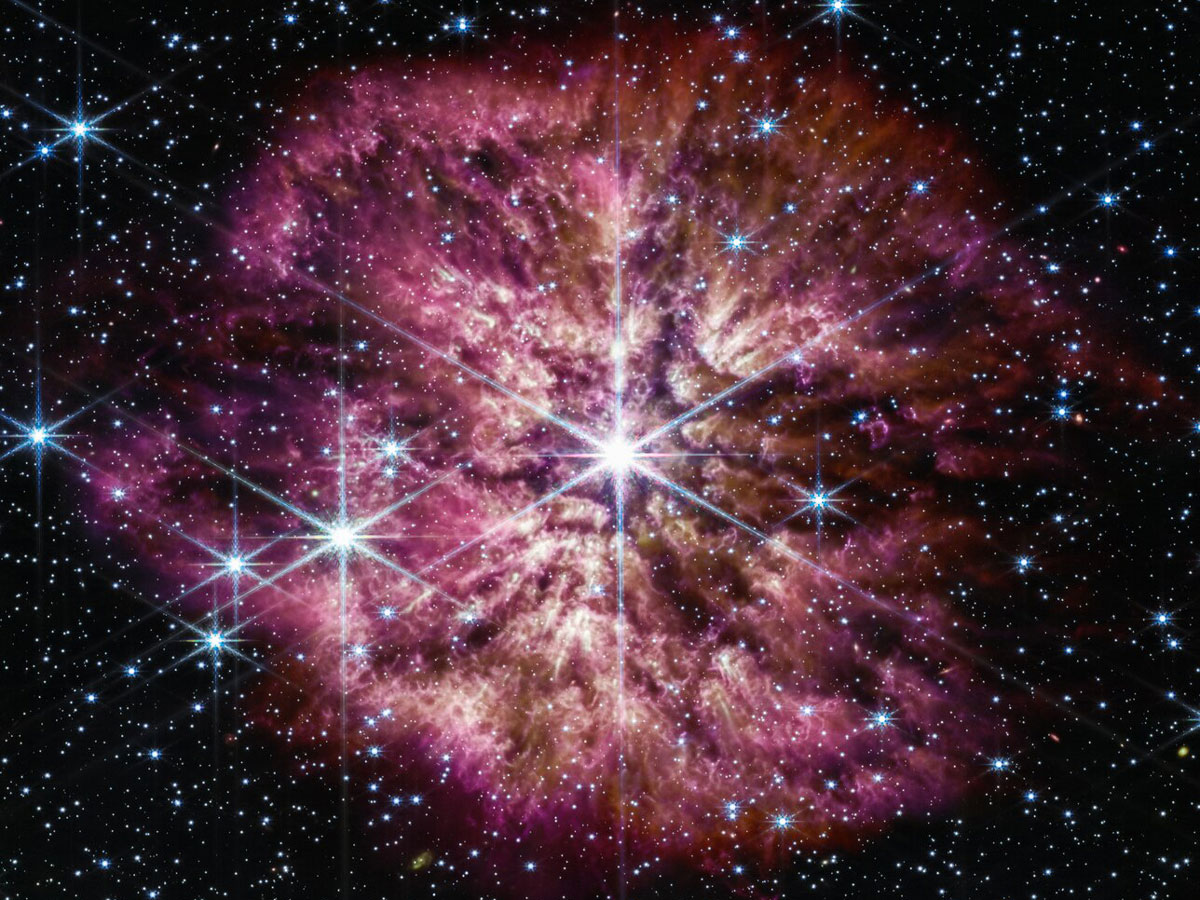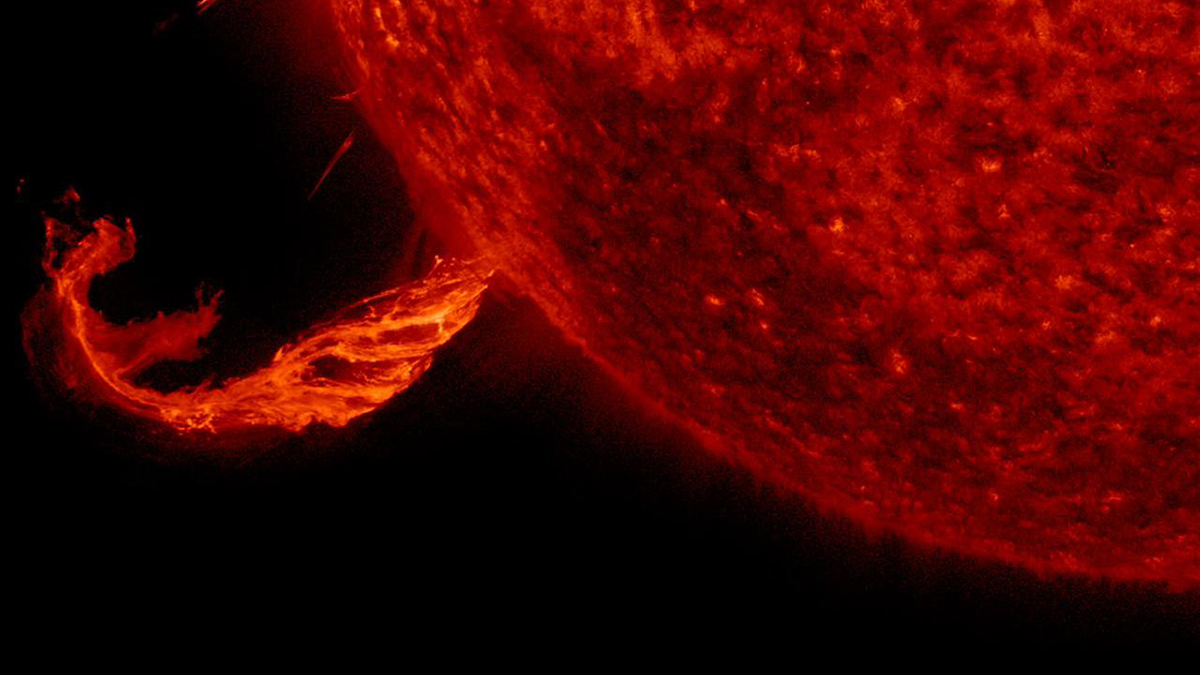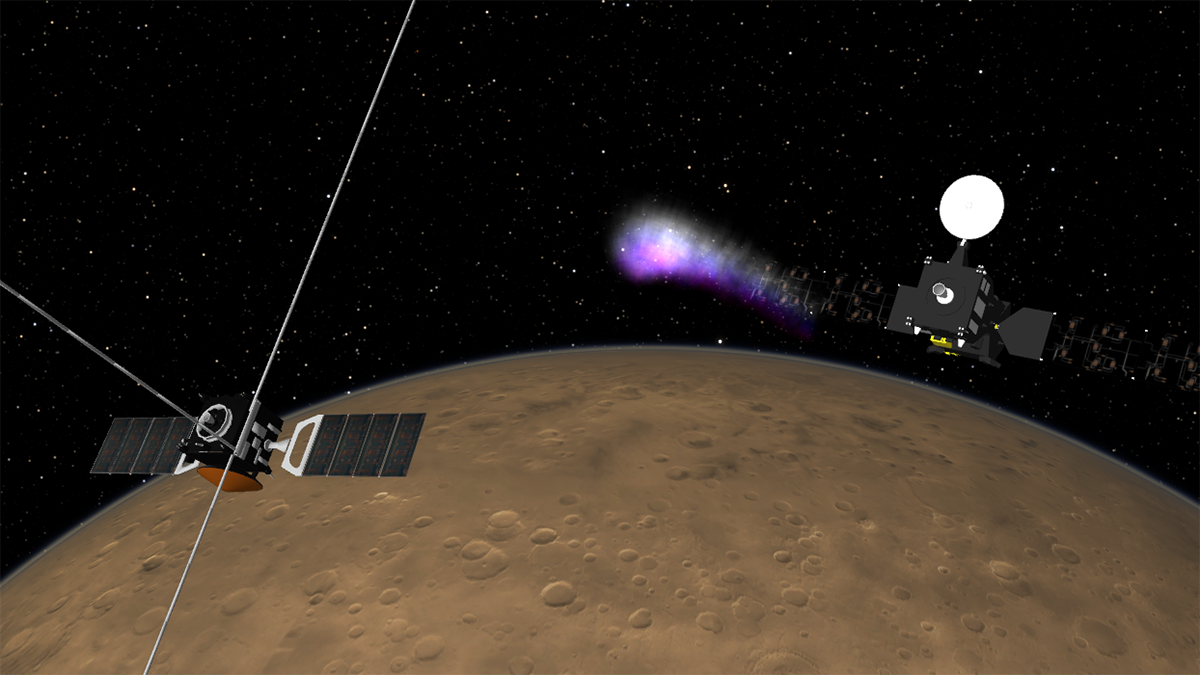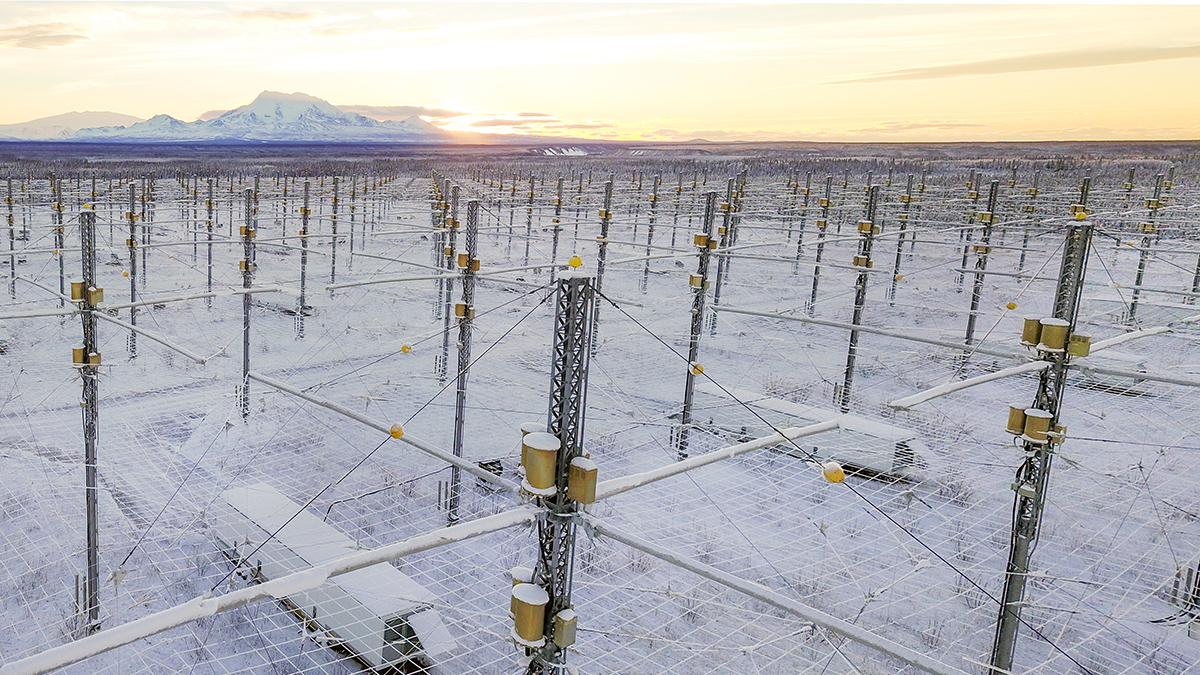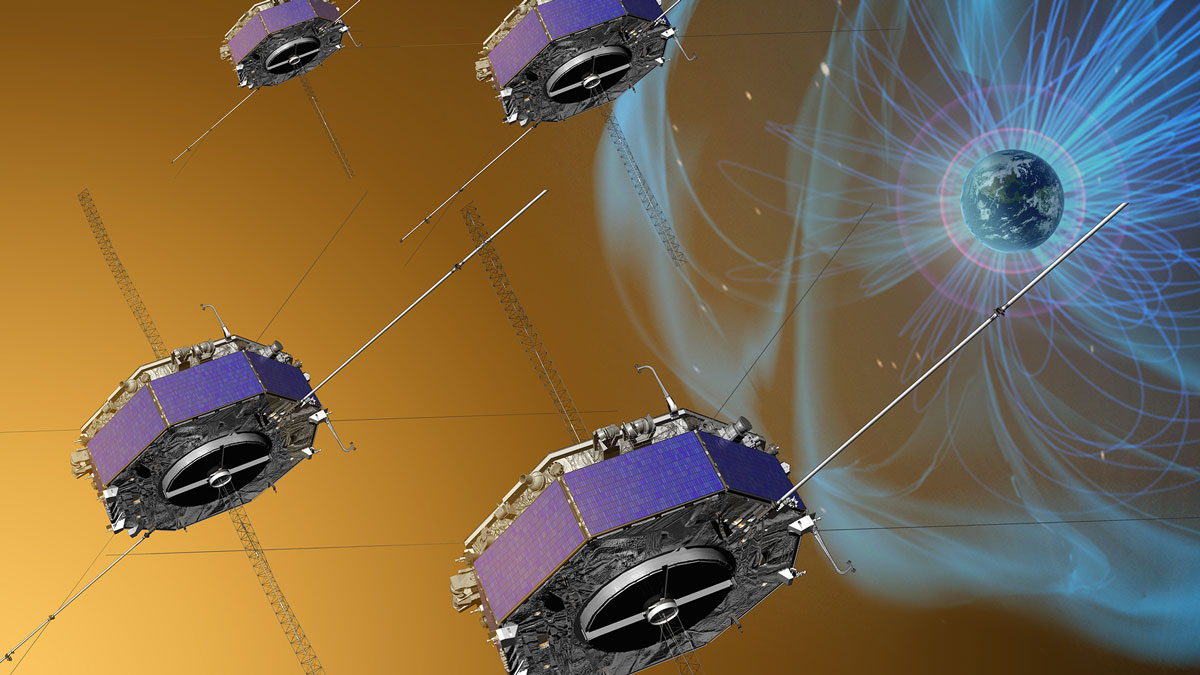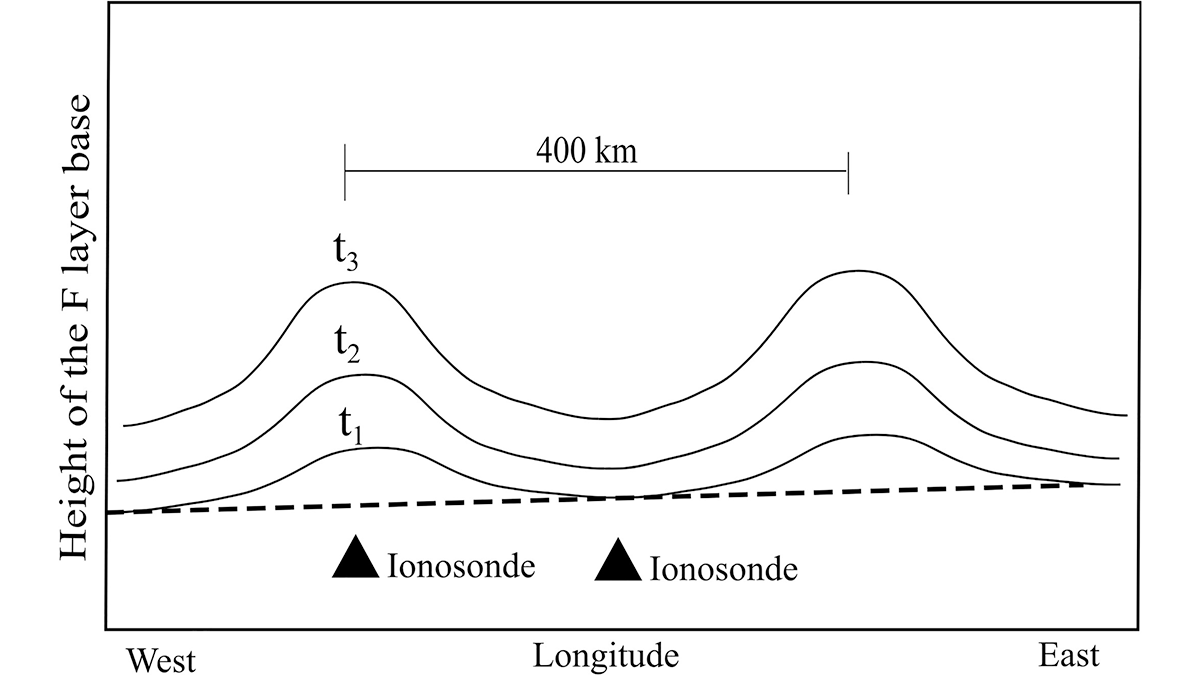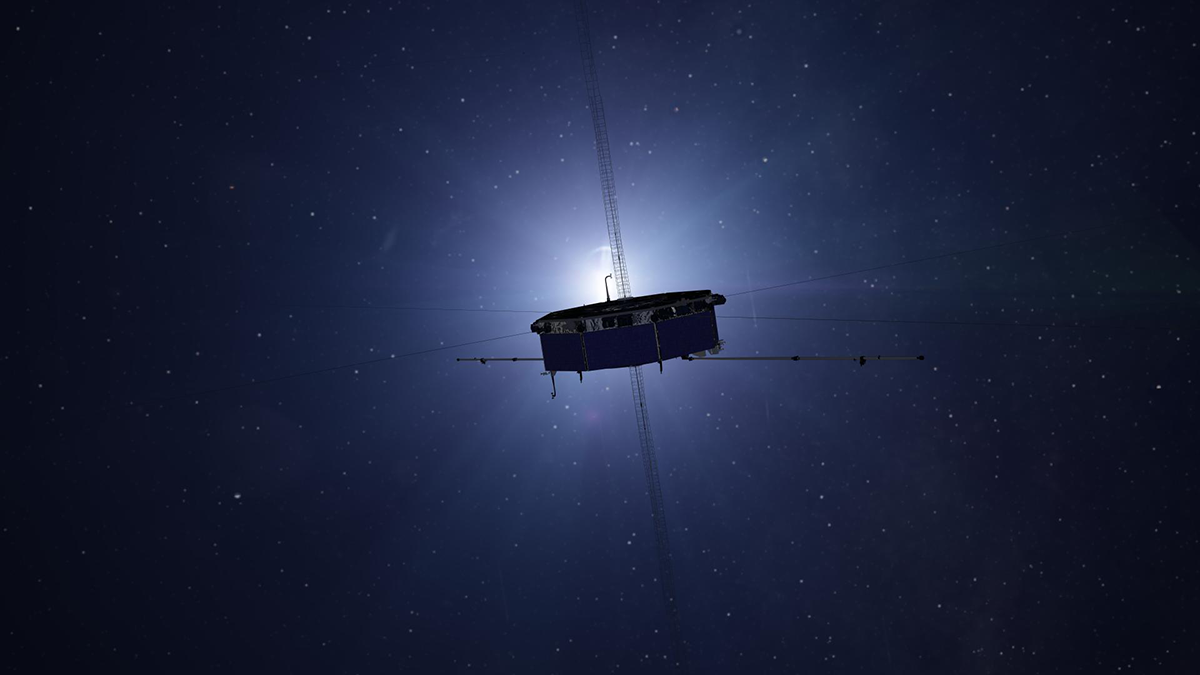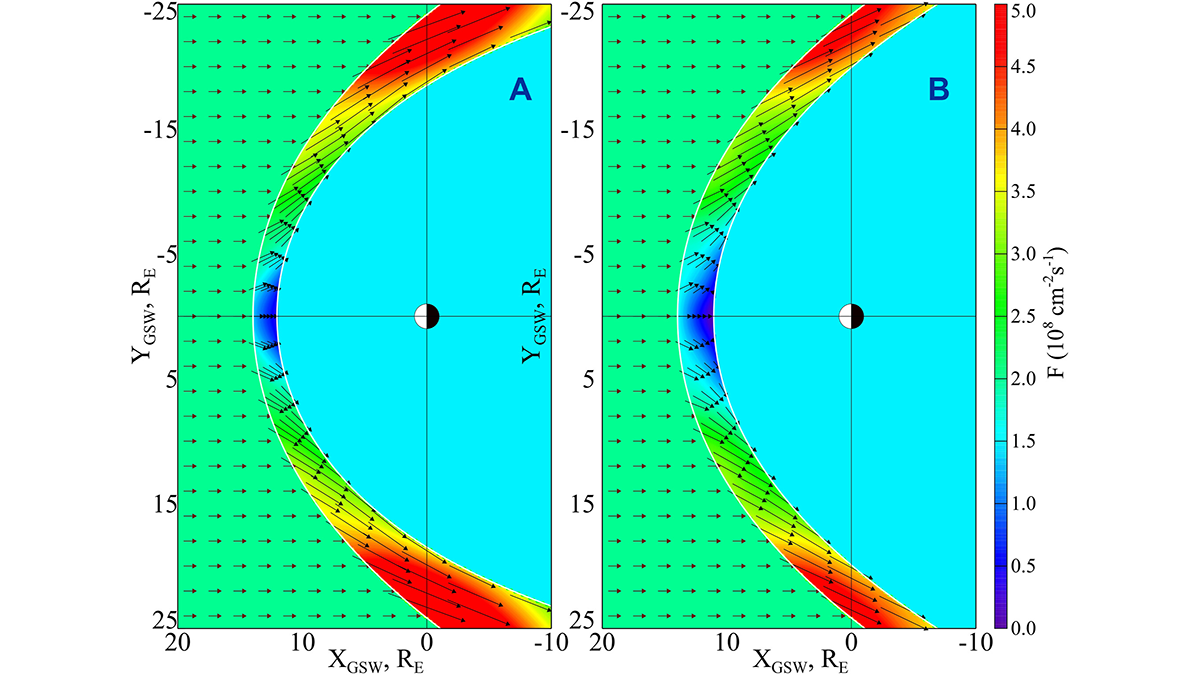Until recently, this type of zigzag shape—formed by energetic rearrangement of magnetic field lines—had been seen only near the Sun.
plasmas
This Star Stripped Off Its Layers Long Before Exploding
A star 2 billion light-years away apparently shed most of its outer layers before exploding, providing new insights into stellar structure—and new mysteries for astronomers to solve.
Why Subsequent ICMEs are More Geoeffective
A new study demonstrates how an interplanetary coronal mass ejection (ICME) clears the path for following transients and explains why subsequent ICMEs are more geoeffective.
Orbiter Pair Expands View of Martian Ionosphere
Radio signals sent between two Mars orbiters—rather than between an orbiter and an Earth-based receiver—capture new insights into atmospheric dynamics.
Nudging Earth’s Ionosphere Helps Us Learn More About It
New observations and simulations capture the physics at play across each of the three main ionospheric regions.
New Insights into an Enigmatic Form of Magnetic Reconnection
A new study deepens understanding of magnetic field behavior recently discovered by NASA in Earth’s magnetosphere.
Prediction of Equatorial Plasma Bubbles for Navigation and Communication
Scientists demonstrate a new technique to predict the formation of equatorial plasma bubbles, a crucial space weather phenomenon affecting satellite-based communication and navigation systems.
Heating Mechanism at Earth’s Bow Shock Depends on Shock Speed
A new technique shows that the dominance of gradual versus chaotic electron heating processes at Earth’s bow shock is controlled by how fast the shock is moving.
Wave-Modulated Electron Loss Affects GPS Location Determination
Earth’s magnetosphere controls ionospheric total electron content modulation via plasma wave-induced electron loss impacting GPS spatial location determination.
New Empirical Model of the Flux in the Magnetosheath
A new study presents a model that reconstructs the plasma flux in the Earth’s magnetosheath.

